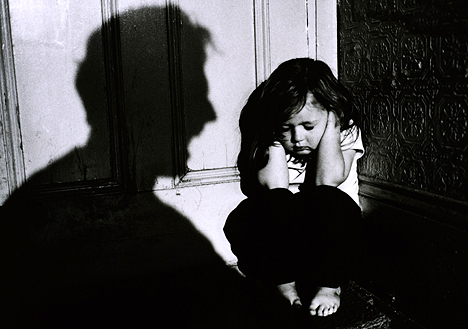Lesson 4: Child Abuse
Attention

Learning Outcomes
Upon completion of this lesson's material, students will be able to:
- Relate the ability to dissociate during trauma with long-lasting problems later in life.
Teaching
Reading about child abuse can be disturbing but there are many individuals in our communities who have experienced abuse at some point in their lives. Every year more than 3 million reports of child abuse are made in the United States involving more than 6 million children. Individuals who reported six or more adverse childhood experiences had an average life expectancy two decads shorter than those who reported none There are multiple medical conditions, that present later in life, that are tied to child abuse. In one study, 80% of 21 year olds who reported having experienced childhood abuse met the criteria for at least one psychological disorder.
There is a series of books written by Dave Pelzer about his journey of living in an abusive home, his journey in foster care, his resilience and ability to overcome a diffcult start. The books are called "A Child Called It", "The Lost Boy", and "A Man Called Dave". You can download free samples (the 1st chapters) of "A Child Called It", "The Lost Boy", and "A Man Called Dave", all written by Dave Pelzer, on iBooks. You can also choose to purchase any of the books through iBooks or Kindle for additional reading. Information from these books can be integrated into your discussion and quiz responses.
For more information on Dave Pelzer click HERE.
Read through the report on Child Abuse in Maine (click the red titled to access the document), based on the statistics form 2015. Be aware that Somerset County, where KVCC is, is one of the highest regions of substantiated child abuse in the state of Maine. Sustantiated abuse means that the Department of Health and Human Services (DHHS) Maine was called with a report of child abuse. A DHHS worker investigated the report and found that yes, there is evidence of child abuse. That results in the report becoming substantiated. If no abuse is found the report is called unsubstantiated. So what did you think? Were these numbers surprising to you?
It is helpful to have an understand of how abuse and neglect can present itself when you are working with a youth. It is not your job to investigate your suspicious. You can ask some questions about what happened with the intent of sharing that information with Child Protective Services Intake when you call them to share your conerns.
Please read through this training program and watch the videos. This series has multiple modules so please complete modules 2 and 3:
Module 2) Recognizing the Warning Signs of Child Abuse and Neglect: https://www.virtuallabschool.org/management/child-abuse-id-reporting/lesson-2
Module 3) Reporting Child Abuse and Neglect: https://www.virtuallabschool.org/management/child-abuse-id-reporting/lesson-3
Assessment
Lesson 4 Discussion (for online course only)
Child abuse occurs all around us but is very hard for us to comprehend that individuals in our communities would want to harm children. Share your thoughts on what might be happening in an individual's life that might lead to that person becoming a perpetrator of child abuse?
Lesson 4 Quiz
Answer the following questions in the designated quiz:
1. Share 3 or 4 warning signs of child abuse and neglect that did not know before reading this Lesson and describe what each might look like if you were working with a child or adolescent (give an example for each).
2. Summarize the process of what you would do if you had information that made you suspect a child was experiencing, or at risk, for abuse or neglect.